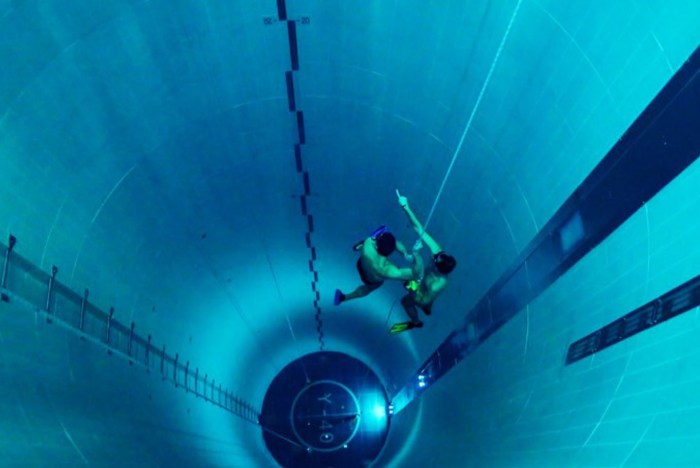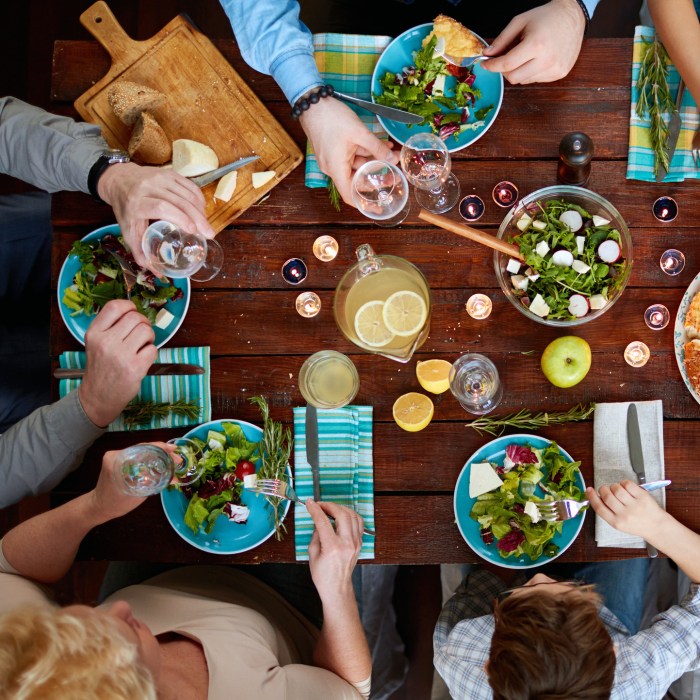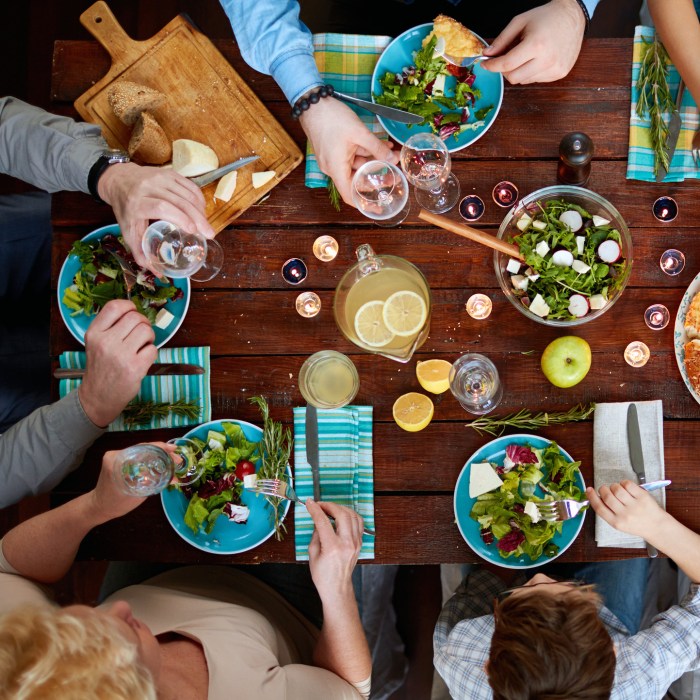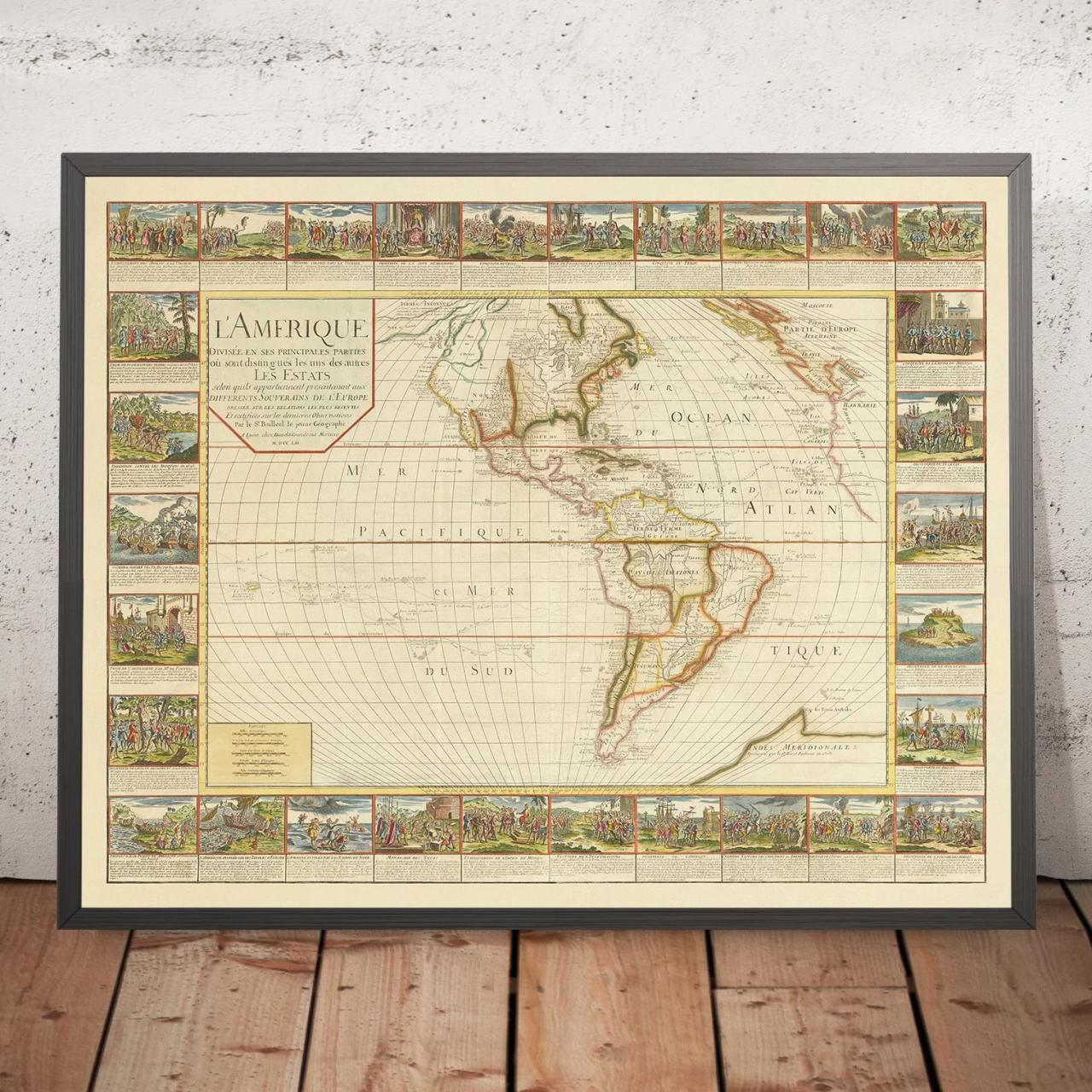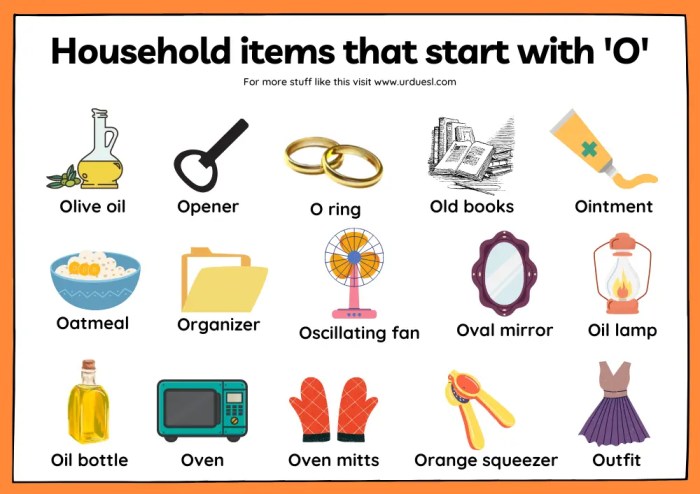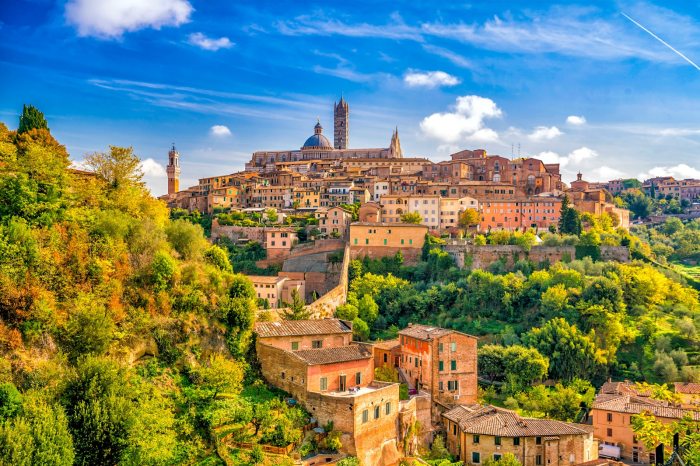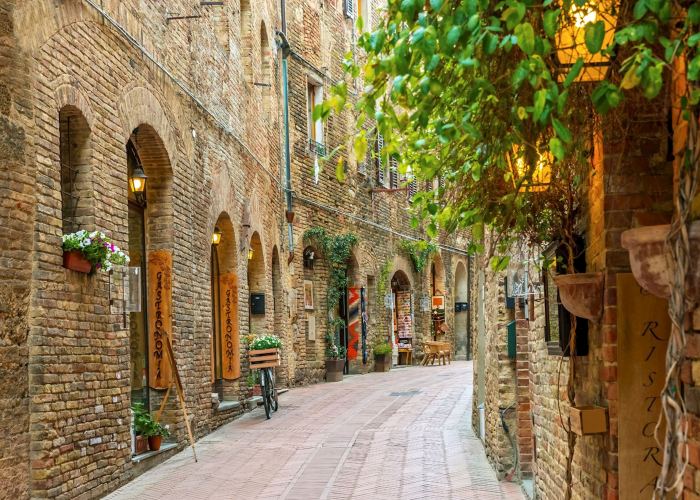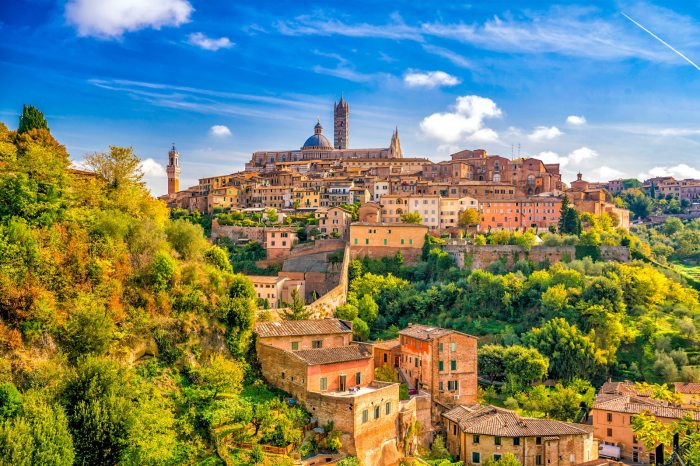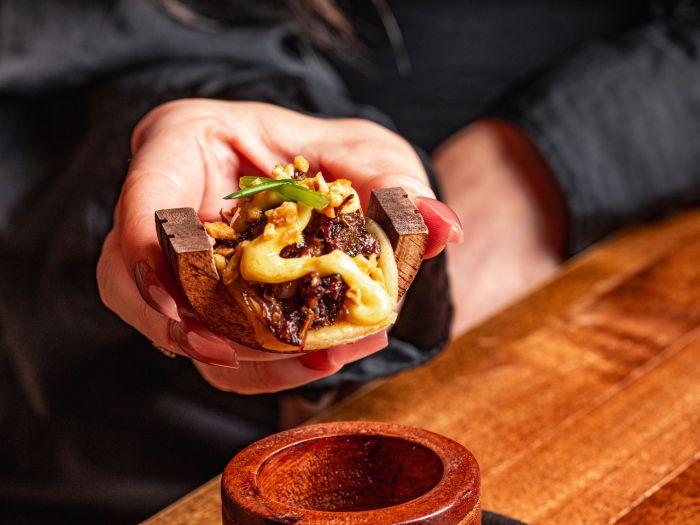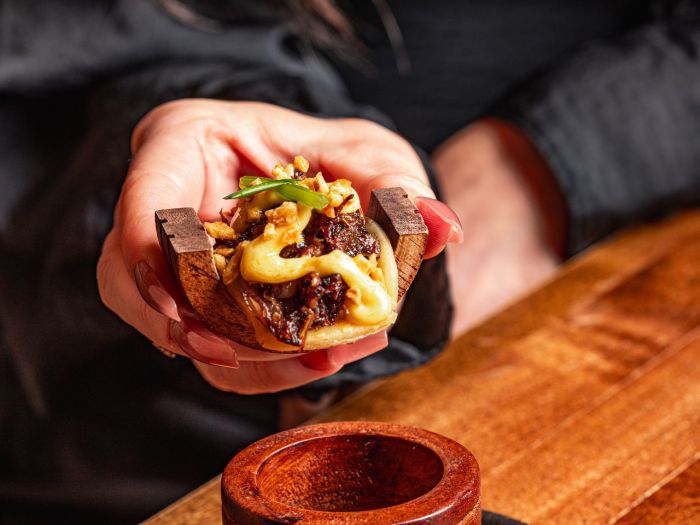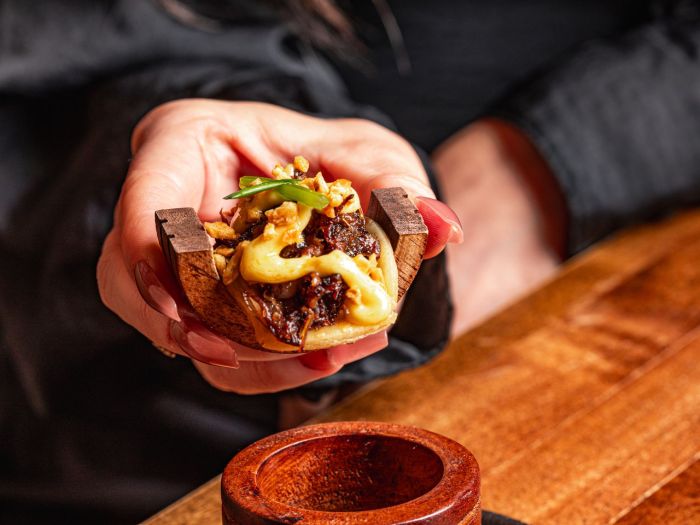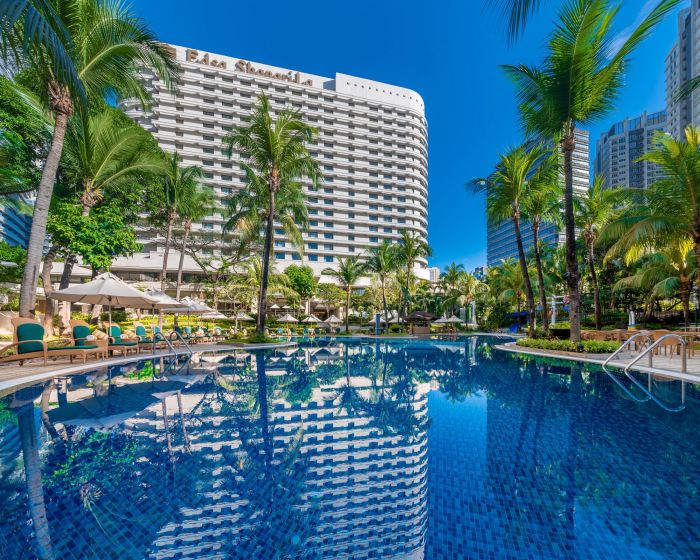Guide to Santa Barbara: Unveiling the charm of this coastal Californian gem, from its historic streets to its breathtaking beaches. This comprehensive guide will equip you with everything you need to plan your unforgettable Santa Barbara adventure. Discover the best time to visit, explore diverse accommodation options, and delve into the city’s vibrant culinary scene and cultural attractions.
Get ready for an enriching experience!
This guide meticulously covers everything from accommodation and activities to transportation and dining, ensuring you have all the essential information to craft your personalized Santa Barbara itinerary. We’ll delve into the city’s unique culture and traditions, highlighting the local events that bring the community together. Discover the hidden gems and popular attractions, and learn how to navigate the city’s transportation system with ease.
Prepare to be amazed by the beauty and allure of Santa Barbara!
Introduction to Santa Barbara
Santa Barbara, nestled on the California coast, is a city that effortlessly blends natural beauty with urban charm. Known for its stunning beaches, historic architecture, and vibrant cultural scene, it offers a unique experience for visitors seeking relaxation, adventure, or a taste of Californian lifestyle. From the iconic Santa Barbara Mission to the picturesque Channel Islands National Park, the city boasts a wealth of attractions that cater to diverse interests.This charming coastal city boasts a rich history intertwined with its stunning natural surroundings.
Its Spanish colonial heritage is evident in the architecture, adding a timeless appeal to the city’s landscape. The city’s vibrant arts and culture scene offers a diverse array of experiences, showcasing local talent and global influences.
Key Features and Attractions
Santa Barbara’s appeal lies in its diverse offerings. The city boasts breathtaking beaches, perfect for sunbathing, surfing, or simply strolling along the shore. The historic Santa Barbara Mission, a beautiful example of Spanish colonial architecture, stands as a testament to the city’s rich past. Furthermore, the city’s renowned restaurants, art galleries, and boutiques offer a sophisticated and engaging experience.
The nearby Channel Islands National Park provides opportunities for exploring the diverse marine ecosystem and the unique wildlife that call this region home.
Historical Background and Cultural Significance
The city’s roots trace back to the Spanish colonization of California. The establishment of the Santa Barbara Mission in 1786 marked a significant turning point in the city’s development. The Spanish colonial influence is evident in the architecture and traditions that still resonate in the city today. The city’s unique blend of Spanish, American, and modern cultures creates a rich tapestry of experiences.
The history is reflected in the city’s museums and historical sites, offering visitors a deeper understanding of its past.
Best Time to Visit
The ideal time to visit Santa Barbara is during the spring (April-May) and fall (September-October). These seasons offer pleasant temperatures, with average highs in the 70s and lows in the 60s. The crowds are typically smaller than during the summer months, allowing for a more relaxed experience. Furthermore, these seasons coincide with fewer rainfall occurrences. Summer (June-August) can be hot and crowded, while winter (November-March) may have occasional rain, but offers a unique charm with cooler temperatures.
Common Misconceptions
- Santa Barbara is only about beaches and relaxation.
- Santa Barbara is exclusively for wealthy tourists.
Santa Barbara is a multifaceted city, offering much more than just sun and sand. The city boasts a vibrant arts and culture scene, with numerous galleries, studios, and performances. While the city does attract a wide range of visitors, its accessibility caters to diverse budgets and interests.
Accommodation Options
Choosing the right place to stay in Santa Barbara is crucial for a memorable trip. The city offers a diverse range of lodging options, from cozy vacation rentals to luxurious hotels, catering to various budgets and preferences. Understanding the pros and cons of each type will help you make an informed decision.Finding the perfect accommodation in Santa Barbara often depends on your priorities.
Whether you prioritize a budget-friendly stay, the amenities of a hotel, or the space and flexibility of a vacation rental, Santa Barbara has something for everyone. This section explores the different accommodation types, highlights key neighborhoods, and provides recommendations to help you find the ideal lodging for your Santa Barbara adventure.
Hotel Comparisons
Hotels offer a curated experience with consistent services and amenities. They provide a convenient base for exploring the city, often including complimentary services like breakfast, pools, and sometimes even parking. However, hotel rooms can be more expensive than other options.
- Budget-Friendly Hotels: These hotels provide essential amenities without breaking the bank. Look for options near the city center or in slightly less central areas for more affordable rates. Examples include hotels in the Funk Zone or near the Santa Barbara Airport, which can still offer convenient access to the city’s attractions.
- Family-Friendly Hotels: These hotels prioritize families with children, offering amenities like kid-friendly pools, cribs, and spacious rooms. Consider hotels with connecting rooms or suites if you’re traveling with a large family. Some hotels in the downtown area or on the beach may offer these amenities.
- Luxury Hotels: These hotels provide a premium experience with upscale amenities, often featuring top-notch service, gourmet dining options, and extravagant accommodations. Hotels located near the waterfront or in exclusive neighborhoods often fall into this category. Consider the Four Seasons or similar establishments in the area.
Vacation Rental Comparisons
Vacation rentals, such as apartments or houses, provide more space and privacy than hotels. This option is a good choice for families or groups looking for more flexibility and kitchen facilities. However, vacation rentals may not have the same level of hotel amenities. Be sure to check for availability and details before booking.
- Pros: Vacation rentals offer more space, often include kitchens, and provide a more home-like atmosphere. The added privacy and freedom to cook your own meals can save money and allow for greater flexibility in your schedule.
- Cons: Vacation rentals may not include amenities like a pool or concierge service. Cleaning and maintenance responsibilities may fall to the renter, and access to amenities like parking may vary.
Neighborhood Variations
Santa Barbara’s neighborhoods offer diverse price ranges and amenities. Downtown Santa Barbara, for example, is known for its high-end hotels and restaurants, while the Funk Zone and State Street are more budget-conscious options.
- Downtown Santa Barbara: This area is known for its high-end hotels and restaurants, offering luxurious experiences and a central location for exploring the city’s attractions.
- Funk Zone: This area boasts a blend of boutique hotels, cafes, and trendy shops, often providing a more unique and lively atmosphere, although prices might be slightly lower than in the downtown area.
- State Street: This is a popular area known for its variety of shops and restaurants, offering a more affordable option compared to downtown.
Recommended Hotels, Guide to santa barbara
Based on different preferences, these hotels might be a good starting point:
- Budget-Friendly: Hotel X, Hotel Y (located in Funk Zone/State Street)
- Family-Friendly: Hotel Z (with kid-friendly amenities, perhaps near the beach)
- Luxury: Hotel A (often near the waterfront or with upscale amenities)
Hotel Amenities Comparison
The following table provides a comparison of hotel amenities:
| Hotel | Breakfast | Pool Access | Parking |
|---|---|---|---|
| Hotel A | Gourmet breakfast buffet | Yes, heated pool | Valet parking |
| Hotel B | Continental breakfast | Yes, outdoor pool | Limited street parking |
| Hotel C | Full breakfast buffet | No | On-site parking garage |
Activities and Attractions: Guide To Santa Barbara
Santa Barbara boasts a vibrant mix of activities and attractions, catering to diverse interests. From sun-soaked beaches to world-class museums, the city offers something for everyone. Whether you’re a history buff, an art enthusiast, or an outdoor adventurer, Santa Barbara has a treasure trove of experiences waiting to be discovered.This section delves into the exciting array of activities and attractions, highlighting both popular spots and hidden gems, providing insight into Santa Barbara’s unique character.
Beaches and Coastal Activities
Santa Barbara’s coastline is a major draw, offering stunning views and opportunities for relaxation and recreation. Numerous beaches cater to various needs, from families seeking a tranquil day at the shore to surfers catching waves.
- State Street Beach: Known for its picturesque views, this beach is a popular spot for families, with soft sand and calm waters. Perfect for building sandcastles or simply soaking up the sun.
- Leadbetter Beach: Ideal for surfers, Leadbetter Beach boasts consistent waves, making it a favorite among those seeking an adrenaline rush.
- Butterfly Beach: A tranquil beach perfect for a romantic stroll, this location provides a quiet escape from the bustle of the city.
Museums and Art Galleries
Santa Barbara boasts a collection of museums and art galleries showcasing diverse artistic styles and historical periods.
- Santa Barbara Museum of Art: This renowned museum features a comprehensive collection of art spanning centuries and styles. From classical paintings to contemporary sculptures, there’s something for every taste. Its architecture complements the artistic exhibits, providing a picturesque setting.
- Santa Barbara Mission: More than just a museum, the mission offers a glimpse into California’s rich history. Its architecture and artifacts provide a window into the region’s past.
- Santa Barbara Botanic Garden: While not exclusively a museum, this garden showcases the beauty and diversity of the local flora. The curated displays offer an educational and serene experience.
Restaurants and Dining Experiences
Santa Barbara is renowned for its exceptional dining scene. From casual eateries to fine-dining establishments, there’s a restaurant to satisfy every palate. Many restaurants feature fresh, locally sourced ingredients.
My guide to Santa Barbara is almost ready! While researching the region’s stunning scenery, I stumbled across an alarming article about the plight of kauri trees at risk. Their ancient beauty is truly threatened, and learning about this important issue has made me even more appreciative of the natural wonders we should protect. Hopefully, my guide will inspire you to explore the unique charm of Santa Barbara and support environmental efforts like those helping the kauri trees.
kauri trees at risk. I’ll be sure to include tips on eco-friendly activities in my guide to Santa Barbara.
- The Lark: A popular choice for delicious, farm-to-table cuisine. Their menu changes seasonally, reflecting the freshest ingredients available.
- Brophy Bros. Oyster Bar: Known for its fresh oysters and seafood, this restaurant offers a taste of the Pacific Ocean.
- Boudro’s: A classic Santa Barbara restaurant known for its ambiance and upscale cuisine.
Outdoor Activities
Santa Barbara provides ample opportunities for outdoor enthusiasts. Hiking trails and scenic drives offer stunning vistas and opportunities for exploration.
- Inspiration Point Trail: A moderate hike offering breathtaking views of the Santa Ynez Valley and the coastline. The trail is a popular spot for both locals and tourists.
- Santa Ynez Mountains: The Santa Ynez Mountains offer various hiking trails for different experience levels. From easy strolls to challenging climbs, these trails cater to a wide range of hikers.
- Highway 1 Scenic Drive: A coastal drive that follows the scenic route along the Pacific Ocean, offering stunning views of the coastline.
Nightlife
Santa Barbara’s nightlife scene is vibrant, offering a variety of options, from lively bars to intimate lounges. The nightlife is known for its relaxed atmosphere, making it a great way to unwind after a day of exploring.
- The Funk Zone: This area is known for its trendy bars and restaurants, offering a lively atmosphere for socializing.
- State Street: A pedestrian-friendly street with numerous bars and pubs that extend the evening’s entertainment.
Dining Experiences
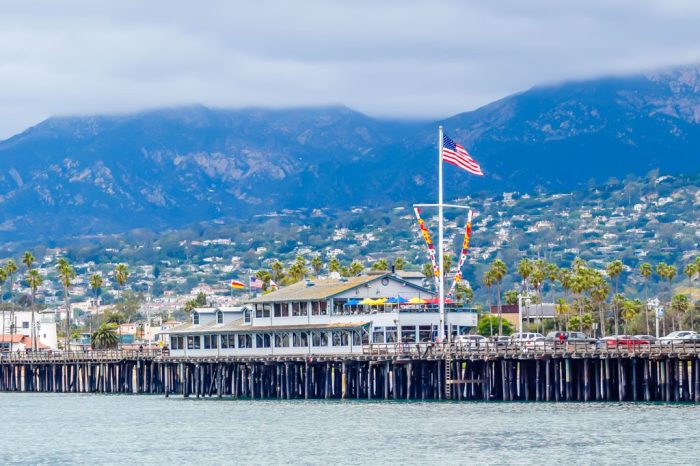
Santa Barbara boasts a vibrant culinary scene, reflecting its beautiful surroundings and diverse population. From upscale dining experiences to casual beachside bites, there’s a restaurant for every taste and budget. The region’s commitment to fresh, local ingredients is evident in the farm-to-table approach embraced by many restaurants. This focus on quality and sustainability elevates the dining experience, creating a memorable and enriching part of any visit.The city’s culinary landscape offers something for everyone, from those seeking fine dining experiences to those looking for quick and delicious casual meals.
Whether you prefer sophisticated ambiance or a relaxed atmosphere, Santa Barbara’s restaurants will cater to your needs. Exploring the local farmers markets and farm-to-table restaurants is an integral part of experiencing the region’s vibrant food culture.
Renowned Restaurants
Santa Barbara is home to several renowned restaurants offering a wide range of culinary experiences. These establishments often feature exquisite ambiance, showcasing both modern and classic styles. Many restaurants specialize in specific cuisines, catering to various palates and preferences. Examples include sophisticated French cuisine at Le Dome, or innovative Californian dishes at The Lark. Exploring these options allows you to savor the region’s diverse culinary offerings.
Casual Dining and Quick Bites
For those seeking casual dining or quick bites, Santa Barbara offers numerous options. These restaurants often feature a more relaxed atmosphere, perfect for enjoying a meal with friends or family. Many are located in popular areas, providing convenient access and quick service. Examples include local favorites like the casual beachside eateries, offering stunning views and fresh seafood.
Dietary Restrictions and Preferences
Many restaurants in Santa Barbara are accommodating to various dietary restrictions and preferences. For those with vegetarian or vegan needs, several restaurants offer dedicated menus or dishes. Restaurants that are committed to gluten-free options are readily available, providing choices for those with gluten sensitivities. Checking menus online or calling ahead can often help determine the availability of these options.
Local Farmers Markets and Farm-to-Table
Local farmers markets play a crucial role in the culinary scene of Santa Barbara. These markets offer a glimpse into the region’s agricultural bounty, showcasing fresh produce and local ingredients. The abundance of fresh, seasonal ingredients fuels the farm-to-table movement in Santa Barbara restaurants. Many restaurants actively partner with local farmers, incorporating these fresh ingredients into their menus.
This approach enhances the quality of the food and supports local producers.
Restaurant Comparison Table
| Restaurant | Cuisine Type | Price Range | Atmosphere |
|---|---|---|---|
| The Lark | California | $$$ | Modern, sophisticated |
| Le Dome | French | $$$ | Elegant, romantic |
| The Boathouse | Seafood | $$ | Relaxed, waterfront |
| Cafe Med | Mediterranean | $ | Casual, lively |
Note: Price ranges are estimated and may vary. $$ = Mid-range, $$$ = Upscale, $ = Budget-friendly.
Transportation and Getting Around
Santa Barbara’s charm lies in its walkable downtown area, but exploring beyond requires thoughtful transportation choices. Whether you’re a car enthusiast, a public transit devotee, or a ride-sharing aficionado, this section will equip you with the knowledge to navigate the city efficiently. From parking costs to public transport schedules, we’ve got you covered.Navigating Santa Barbara’s diverse neighborhoods and attractions efficiently hinges on understanding your transportation options.
A car offers flexibility but comes with parking considerations. Public transport, while less flexible, is a cost-effective and environmentally friendly choice. Ride-sharing services offer a middle ground. This guide will help you decide which method suits your needs and budget best.
Parking Availability and Costs
Parking in Santa Barbara, especially downtown, can be challenging and expensive. The cost varies significantly depending on the location and time of day. Street parking is often metered, with rates increasing during peak hours. Parking garages are available in central areas, typically with higher fees than street parking. Valet parking is also an option, but this comes with the highest cost.
Consider these factors when planning your trips.
So, you’re planning a trip to Santa Barbara? I’ve got a fantastic guide coming up soon! But while you’re dreaming of sun-drenched beaches and charming cafes, have you considered exploring some incredible national parks? For example, checking out trip ideas and the best places to stay in Yellowstone National Park might be a great starting point.
trip ideas national parks best places to stay in yellowstone national will give you some inspiration. No matter where your adventures take you, remember to make Santa Barbara a must-see destination!
Public Transportation Options
Santa Barbara’s public transportation system, known as the Santa Barbara Metropolitan Transit District (Metro), offers bus routes throughout the city and surrounding areas. This system is a practical alternative to driving, particularly for budget-conscious travelers. Bus routes connect various residential areas, businesses, and popular attractions. Metro’s website provides detailed route maps, schedules, and real-time information.
Getting Around Without a Car
For those traveling without a car, the Metro system offers a convenient and cost-effective way to explore Santa Barbara. Combine this with walkable downtown areas and nearby attractions for a well-rounded experience. Use the Metro’s website for real-time schedules and route information to plan your day effectively. Consider purchasing a day pass for cost savings if you anticipate using the system multiple times.
Directions and Travel Time Estimates
| Destination | Travel Time (Approx.) from City Center | Best Transportation Option |
|---|---|---|
| Santa Barbara Mission | 15-20 minutes (by bus) | Metro Bus |
| State Street Promenade | 5-10 minutes (walk) | Walking |
| Butterfly Beach | 30-40 minutes (by bus) | Metro Bus |
| Santa Barbara Zoo | 30-40 minutes (by bus) | Metro Bus |
| Santa Barbara Airport (SBA) | 20-30 minutes (by taxi or ride-sharing) | Ride-sharing or taxi |
These estimates are approximations and can vary based on traffic conditions. Real-time information from the Metro website is recommended for the most accurate trip planning.
Planning Your Trip
Planning a trip to Santa Barbara involves careful consideration of various factors to ensure a smooth and enjoyable experience. From booking accommodations and activities to navigating visa requirements and creating a personalized itinerary, meticulous preparation is key. This section provides a comprehensive guide to help you plan your Santa Barbara adventure.Thorough planning is crucial for maximizing your time and minimizing stress.
A well-structured itinerary, coupled with pre-booked accommodations and activities, allows you to fully immerse yourself in the beauty and charm of Santa Barbara without the worry of last-minute arrangements.
Essential Documents and Travel Arrangements
Careful preparation of necessary documents and travel arrangements is essential for a smooth trip. This includes not only passports and visas but also travel insurance and relevant confirmations.
- Passports and Visas: International visitors require valid passports and, potentially, visas. Check the specific visa requirements for your nationality well in advance of your travel date, as requirements can change. Ensure your passport has sufficient validity beyond your planned stay.
- Travel Insurance: Purchase comprehensive travel insurance to cover unforeseen circumstances such as medical emergencies, trip cancellations, or lost luggage. This provides financial security and peace of mind.
- Flight and Transportation: Book flights and transportation well in advance, especially during peak season. Consider factors like flight times, layovers, and transportation options to and from the airport.
- Accommodation Bookings: Secure your accommodation well in advance, particularly during peak tourist periods. This will guarantee your preferred lodging options and rates.
Booking Accommodations and Activities
Booking accommodations and activities in advance is crucial for securing your preferred choices and often securing better prices. This proactive approach allows you to select from a wider variety of options and ensures you have the best possible experience.
- Accommodation Options: Explore various accommodation options in Santa Barbara, including hotels, resorts, vacation rentals, and Airbnb. Compare prices, amenities, and locations to find the best fit for your needs and budget.
- Activity Bookings: Book tours, excursions, and activities, such as whale watching or wine tasting, in advance to secure your spot and avoid disappointment. Many popular activities sell out quickly.
- Comparing Prices: Utilize online travel agencies and comparison websites to compare prices and amenities of various hotels and activities. This will help you make informed decisions and maximize your value.
Visa Requirements for International Visitors
Understanding visa requirements is crucial for international travelers planning a trip to Santa Barbara. Verify specific visa requirements based on your nationality and the duration of your stay.
- Country-Specific Information: Check the official websites of the U.S. embassy or consulate in your home country for the most up-to-date visa information and procedures. Requirements vary by nationality.
- Processing Time: Visa applications can take time to process, so apply well in advance to allow for any potential delays. Anticipate processing times to avoid last-minute stress.
Creating a Personalized Itinerary
A personalized itinerary allows you to tailor your Santa Barbara trip to your interests and preferences. Consider your interests and time constraints to create an effective itinerary.
- Interests and Preferences: Identify your primary interests (e.g., beaches, history, food, wine) to guide your itinerary choices. Incorporate your preferred pace and activity level.
- Time Constraints: Your trip duration will influence your itinerary choices. Allocate appropriate time for each activity and location to ensure you maximize your experience.
- Research and Planning: Research attractions, restaurants, and activities that align with your interests. This allows for an efficient and personalized itinerary.
Sample 3-Day Itinerary
This sample itinerary provides a framework for a 3-day trip to Santa Barbara. It can be customized to fit your interests and preferences.
| Day | Morning | Afternoon | Evening |
|---|---|---|---|
| Day 1 | Arrive in Santa Barbara, check into hotel, explore State Street | Visit the Santa Barbara Mission | Dinner at a local restaurant in the Funk Zone |
| Day 2 | Morning walk along the beach, visit Butterfly Beach | Explore the Santa Barbara Zoo or visit the Santa Barbara Botanic Garden | Dinner and live music at a restaurant in the downtown area |
| Day 3 | Visit the Santa Barbara Museum of Art | Explore the Santa Barbara Harbor and enjoy the views | Departure |
Local Culture and Events
Santa Barbara boasts a vibrant and unique culture, deeply intertwined with its stunning natural beauty and Spanish colonial heritage. The city’s rich history is reflected in its architecture, traditions, and festivals, creating a welcoming atmosphere for visitors. From the bustling farmers markets to the artistic expressions, Santa Barbara offers a diverse and engaging experience.The city’s spirit is palpable, encouraging a sense of community and fostering a warm welcome for all.
This spirit is evident in the many events and festivals that take place throughout the year, each one celebrating the city’s diverse heritage and cultural tapestry.
Local Festivals and Events
Santa Barbara hosts a calendar of vibrant festivals and events that celebrate the region’s culture and heritage. These celebrations are a wonderful opportunity to experience the city’s unique atmosphere firsthand.
Planning a trip to Santa Barbara? It’s a beautiful destination, but if you’re looking for a place to retire on a budget, exploring locations like Mississippi, with its reportedly low retirement expenses, might be worth checking out. A recent report on Mississippi’s lowest retirement expenses in America suggests it could be a great option for those seeking a more affordable retirement.
However, if you’re still leaning towards Santa Barbara’s charm, my guide has tons of tips to make the most of your visit!
- Santa Barbara International Film Festival: This prestigious event showcases independent films from around the world, drawing film enthusiasts and industry professionals alike.
- Santa Barbara Wine Festival: A popular event celebrating the region’s renowned wine production, featuring tastings, workshops, and gourmet food pairings.
- Santa Barbara County Fair: A long-standing tradition, this fair offers a wide range of activities, from livestock exhibitions to carnival rides and entertainment for the entire family.
- Santa Barbara County Farmers Market: Held weekly, this market is a hub for local produce, artisanal goods, and live music, creating a lively atmosphere that fosters community connection.
Local Businesses Supporting the Community
Many local businesses in Santa Barbara actively contribute to the community’s well-being. They prioritize ethical practices and support local initiatives, creating a positive impact beyond the realm of commerce.
- Artisan shops and boutiques: These businesses often feature handmade crafts and goods, supporting local artisans and providing unique, high-quality products.
- Restaurants that source locally: Many restaurants in Santa Barbara prioritize locally sourced ingredients, reducing their environmental footprint and supporting regional farmers and producers.
- Nonprofit organizations: These groups actively work to address social issues and enhance the community’s well-being, receiving support from businesses that donate time, goods, or services.
Local Artisans and Craftspeople
Santa Barbara has a thriving arts and crafts scene, with numerous talented artisans and craftspeople showcasing their unique skills and creations. Their work often reflects the region’s natural beauty and cultural heritage.
- Pottery artists: Many local artisans create beautiful pottery, showcasing the region’s natural resources and artistic talent.
- Jewelry designers: These artisans create intricate and beautiful pieces, often using locally sourced materials and unique design elements.
- Painters and sculptors: These artists showcase a wide array of styles and mediums, reflecting the diverse talents within the community.
Role of Arts and Culture in Santa Barbara
The arts and culture scene plays a crucial role in shaping Santa Barbara’s identity and attracting visitors. The city’s commitment to the arts is evident in its numerous galleries, theaters, and performance venues.
- Galleries: A wide range of galleries showcase diverse artistic styles and provide a platform for local and emerging artists.
- Theaters and performance venues: These venues host plays, concerts, and other performances, enriching the cultural landscape and attracting diverse audiences.
- Music scene: From live music venues to independent musicians, Santa Barbara offers a vibrant music scene that caters to a variety of tastes.
Beaches and Coastal Activities

Santa Barbara’s stunning coastline boasts a variety of beaches, each offering unique experiences. From family-friendly shores perfect for picnics and building sandcastles to exhilarating surfing spots for seasoned wave riders, there’s a beach for everyone. Exploring these coastal gems is a quintessential part of experiencing the city’s charm.Santa Barbara’s beaches are more than just stretches of sand; they are vibrant hubs of activity, with a range of water sports, and amenities catering to different needs and preferences.
Knowing what to expect and how to navigate these popular spots will enhance your experience.
Beach Descriptions and Accessibility
Santa Barbara’s beaches vary in size, character, and facilities. Understanding the unique features of each beach is crucial for planning your visit. Accessibility and facilities play a significant role in making your beach day enjoyable.
- State Street Beach: This is a popular spot for families and casual beachgoers. The beach is relatively flat, making it accessible to all ages. A wide range of beach activities and amenities are available, including restrooms, showers, and picnic tables. It’s a great choice for families seeking a relaxing beach experience.
- Leadbetter Beach: Known for its excellent surfing conditions, Leadbetter Beach attracts experienced surfers and those seeking an adrenaline-fueled experience. The waves are generally larger and more powerful than those at State Street Beach. While less family-friendly than other options, it does have limited facilities.
- East Beach: A quieter and more secluded beach, East Beach is ideal for those seeking peace and solitude. The beach offers stunning views and is perfect for sunbathing, reading, or simply enjoying the ambiance. Amenities are limited, but the beach’s charm lies in its laid-back atmosphere.
- Butterfly Beach: This charming beach is nestled within the city’s historic area, with picturesque views and a relaxed atmosphere. It’s a popular spot for families due to its calm waters and accessible facilities. The beach is known for its picturesque views and offers a chance to relax and enjoy the Santa Barbara atmosphere.
Water Sports and Activities
Santa Barbara’s beaches are perfect for various water activities. From surfing and paddleboarding to kayaking and snorkeling, there’s something for everyone.
- Surfing: Leadbetter Beach is renowned for its consistently good waves, making it a favorite among surfers. Other beaches, like East Beach, also offer opportunities for catching some waves, depending on the conditions.
- Paddleboarding and Kayaking: Paddleboarding and kayaking are fantastic ways to explore the coastline and enjoy the tranquil waters. Several rental shops are located near the beaches, providing easy access to these activities.
- Snorkeling and Scuba Diving: The waters surrounding Santa Barbara offer opportunities for snorkeling and scuba diving. The underwater visibility varies, but exploring the marine life is always an unforgettable experience.
Safety and Responsible Beach Practices
To ensure a safe and enjoyable beach experience, follow these simple guidelines:
- Check the weather forecast and ocean conditions before heading to the beach. Be mindful of potential hazards like strong currents or unexpected storms.
- Swim within designated areas and heed any warning flags or signs. Always be aware of your surroundings.
- Be cautious of rip currents, which can be dangerous. If caught in a rip current, don’t fight it; swim parallel to the shore until you’re out of the current.
- Never swim alone. Always swim with a buddy, especially in unfamiliar areas.
- Pack sunscreen, a hat, and sunglasses to protect yourself from the sun. Stay hydrated by bringing plenty of water.
Beach Amenities Comparison
The table below summarizes the amenities and activities available at each beach, helping you choose the best fit for your needs.
| Beach | Accessibility | Facilities | Activities |
|---|---|---|---|
| State Street Beach | High | Restrooms, showers, picnic tables | Family-friendly, casual beach activities |
| Leadbetter Beach | Moderate | Limited facilities | Surfing, beach volleyball |
| East Beach | High | Limited facilities | Relaxation, scenic views |
| Butterfly Beach | High | Restrooms, limited picnic areas | Family-friendly, relaxed atmosphere |
Shopping and Retail Experiences
Santa Barbara boasts a vibrant retail scene, catering to diverse tastes and budgets. From upscale boutiques to local artisan shops, the city offers a unique blend of high-end and handcrafted goods. The shopping experience is an integral part of exploring the city’s charm, allowing visitors to discover unique treasures and support local businesses.
Unique Shopping Experiences
Santa Barbara’s shopping experiences are varied, encompassing everything from high-end designer stores to intimate boutiques featuring local artisans. The city’s distinct shopping districts contribute to its unique atmosphere, offering a curated experience that caters to various interests. A walk along State Street or a visit to the charming shops nestled within the historic neighborhoods provides a chance to find one-of-a-kind items and immerse oneself in the local culture.
Local Artisans and Designers
Supporting local artisans and designers is a key component of the shopping experience in Santa Barbara. Many shops and stores feature handcrafted items, showcasing the creativity and talent of the region’s artisans.
- The Santa Barbara Handcrafts Collective: This organization fosters a community of talented artisans, often hosting exhibitions and pop-up shops. Their collective exhibits a wide array of handcrafted items, from pottery and jewelry to textiles and paintings.
- The Design District: This neighborhood is known for its curated collection of boutiques featuring local designers and artists, often showcasing unique and contemporary pieces.
- Santa Barbara County Farmers’ Markets: These markets provide an opportunity to find locally-produced goods, including artisanal foods, crafts, and clothing, often featuring unique pieces from local designers.
Shopping Districts
Santa Barbara’s shopping districts are crucial to the city’s retail landscape. They provide a concentrated area for browsing, offering a diverse range of options from high-end stores to smaller, locally-owned boutiques. These districts create a vibrant atmosphere, fostering a sense of community and encouraging foot traffic, thereby contributing to the city’s overall charm.
- State Street: This is a prominent shopping destination with a mix of national brands, local boutiques, and cafes. The street’s architectural style and bustling atmosphere contribute to the vibrant shopping experience.
- Downtown Santa Barbara: This central area features a variety of stores, from high-end boutiques to unique specialty shops. The proximity to restaurants and other attractions makes it a popular destination.
- The Funk Zone: This area has a trendy and eclectic atmosphere, featuring shops that combine modern design with local craftsmanship.
Finding Local Souvenirs
Santa Barbara offers a plethora of unique souvenirs that capture the essence of the region. These items are often handcrafted, showcasing the local artistry and craftsmanship. These items can serve as memorable mementos of your visit, offering a tangible link to the city’s unique character.
- Local Artisans’ Studios and Workshops: Visiting local studios and workshops directly allows you to interact with the artists, learn about their process, and find one-of-a-kind pieces that reflect their unique style.
- Farmers’ Markets: These markets often feature local craftspeople selling handcrafted items, including jewelry, ceramics, and artwork.
- Boutique Shops: Many boutiques feature items that reflect Santa Barbara’s lifestyle, such as beach-themed apparel, decorative items, and artwork.
Comparison of Shopping Destinations
The following table provides a concise comparison of various shopping destinations in Santa Barbara, highlighting their unique characteristics:
| Shopping Destination | Atmosphere | Types of Stores | Price Range |
|---|---|---|---|
| State Street | Bustling, vibrant | Mix of national chains and local boutiques | Moderate to high |
| Downtown Santa Barbara | Central, diverse | Variety of shops, from high-end to local crafts | Moderate to high |
| Funk Zone | Trendy, eclectic | Independent boutiques, art galleries | Moderate |
Conclusion
In conclusion, this guide to Santa Barbara provides a thorough overview of everything you need to know for a memorable trip. From finding the perfect accommodation to exploring the local culture and dining scene, we’ve covered all the bases. So, pack your bags, book your flights, and get ready to experience the magic of Santa Barbara. We hope this guide helps you plan the perfect getaway!


